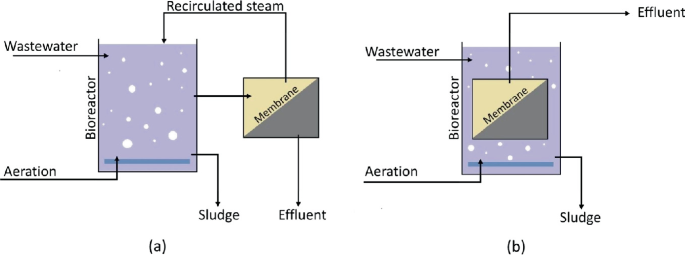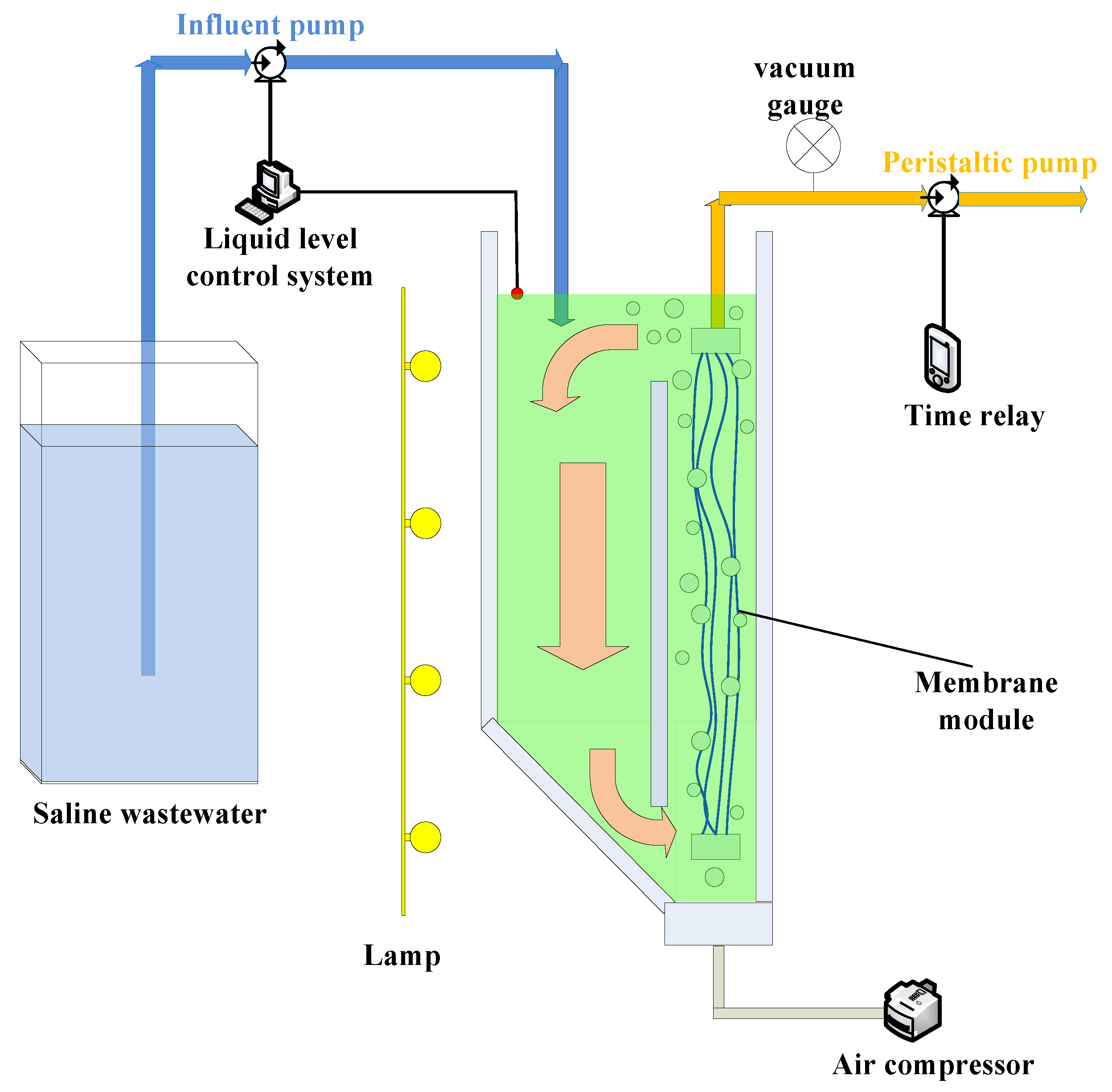How to Optimize Membrane Bioreactor Performance for Maximum Efficiency
Wiki Article
Exactly How Membrane Layer Bioreactors Are Reinventing Water Purification Systems
The emergence of membrane layer bioreactors (MBRs) represents a significant innovation in the area of water filtration, merging biological therapy procedures with advanced membrane filtering technologies. This combination not just boosts the top quality of treated effluent but also addresses urban space restraints, making MBRs specifically suitable for densely booming areas. As international water deficiency escalates, the function of MBRs in facilitating potable water reuse and lasting water management comes to be progressively vital. Yet, the ramifications of this innovation expand beyond effectiveness-- what possibilities and difficulties exist in advance for its extensive implementation?Introduction of Membrane Bioreactors
Membrane bioreactors (MBRs) stand for a significant improvement in water purification technology, as they integrate organic therapy processes with membrane layer filtration. This combination enhances the performance of wastewater therapy by utilizing microbes to deteriorate natural pollutants while all at once using semi-permeable membranes to different treated water from suspended solids and virus.The MBR system typically includes an organic activator where the microbial populace metabolizes contaminants, followed by a membrane layer purification system that retains biomass and allows only clean water to pass through. This dual performance causes greater effluent top quality contrasted to traditional therapy methods. MBRs can be operated in both batch and continual flow modes, providing flexibility in design and application.
In Addition, MBRs are identified by their compact impact, making them ideal for urban settings with room constraints. Membrane Bioreactor. They additionally make it possible for the recovery of water for reuse, therefore adding to water sustainability campaigns. While MBR technology has actually gained popularity in municipal and commercial applications, its operational intricacies and energy needs require cautious consideration during application. Overall, MBRs go to the center of improving water therapy effectiveness and high quality, showcasing the capacity for ingenious options in environmental administration.
Advantages of MBR Technology
The assimilation of organic therapy with membrane filtration offers many advantages for water filtration procedures. One of the key benefits of Membrane layer Bioreactor (MBR) modern technology is its ability to properly get rid of both organic and not natural impurities, causing high-grade effluent. The membranes work as a physical barrier, avoiding suspended solids and microorganisms from going through, which improves the total safety and reliability of cured water.Additionally, MBR systems call for a smaller impact contrasted to traditional treatment methods, allowing for a lot more reliable room usage. This small design is particularly helpful in metropolitan settings where land is restricted. MBRs also show operational versatility, suiting varying influent qualities and circulation prices without significant efficiency deterioration.
Furthermore, the process provides enhanced nutrient elimination capabilities, particularly for nitrogen and phosphorus, which are essential for protecting against eutrophication in receiving waters. The lowered sludge manufacturing connected with MBR innovation likewise converts to decrease disposal prices, making it an affordable remedy over time - Membrane Bioreactor. Generally, the advantages of MBR innovation position it as a leading choice for ingenious and lasting water filtration systems, resolving both ecological and financial worries
Applications in Water Filtration
Applications of Membrane Layer Bioreactor (MBR) innovation in water purification are diverse and impactful, attending to different therapy requires across numerous industries. MBRs properly incorporate organic treatment processes with membrane layer filtration, making them perfect for community wastewater treatment, industrial effluent monitoring, and also potable water reuse campaigns.In top article metropolitan settings, MBRs are significantly utilized to boost the quality of treated wastewater, enabling compliance with strict discharge regulations and promoting the recycling of water for irrigation and non-potable usages. Their portable design additionally makes them suitable for city environments where room is restricted.
Industrially, MBR technology is made use of to treat process water and wastewater, especially in industries such as food and beverage, drugs, and textiles. By properly removing pollutants and put on hold solids, MBRs help sectors lessen ecological impacts while recuperating beneficial sources from wastewater streams.
Moreover, MBRs are obtaining grip in decentralized water therapy applications, where small systems can be deployed in remote areas or developing regions. This flexibility makes it possible for areas to attain lasting water administration remedies, enhancing accessibility to tidy water while reducing reliance on standard therapy techniques.
Instance Studies and Success Stories

In another example, a fabric production facility in Bangladesh took on MBR technology to resolve its wastewater difficulties. The system decreased chemical oxygen need (COD) levels from 1,200 mg/L to much less than 100 mg/L, therefore satisfying governing requirements and dramatically reducing environmental influence.
The College of Cape Town's MBR installation has confirmed effective in dealing with greywater for non-potable reuse on campus. This job not only conserves drinkable water however also serves as an instructional model for lasting techniques.
Furthermore, a seafood processing plant in Norway utilized MBR technology to deal with effluents having high levels of raw material, achieving over 90% pollutant elimination. These instance studies emphasize MBR technology's versatility and its vital function in improving water high quality throughout diverse applications.
Future of Water Treatment Solutions
As global water deficiency and contamination obstacles heighten, cutting-edge water treatment services are becoming significantly vital to ensure lasting access to clean water. The future of water treatment hinges on the combination of sophisticated innovations that improve the performance and efficiency of purification processes. Membrane bioreactors (MBRs) are at the center of this development, integrating organic treatment with membrane layer filtration to create high-grade effluent suitable for various applications.
Arising trends such as source recovery from wastewater, consisting of nutrients and power, will better change therapy centers into green centers. Moreover, innovations in nanotechnology and membrane products assure improved efficiency and longevity of filtration systems.

Final Thought
Finally, membrane layer bioreactors represent a substantial development in water purification modern technologies, effectively combining organic therapy with advanced membrane layer filtering. The countless advantages, consisting of improved effluent quality and reduced spatial demands, make MBRs specifically ideal for city applications. Their function in safe and clean water reuse and sustainable water monitoring highlights their relevance in dealing with international water shortage obstacles. Continued r & d will better improve the efficacy and fostering of MBR technology, ensuring a durable future for water therapy options.The development of membrane layer bioreactors (MBRs) stands for a significant development in the area of water purification, combining biological treatment procedures with innovative membrane layer filtering technologies. As international water scarcity escalates, the function of MBRs in facilitating drinkable water reuse and lasting water management comes to be increasingly essential. They likewise allow the recuperation of water for reuse, therefore adding to water sustainability campaigns.As international water shortage and pollution obstacles increase, innovative water treatment solutions are ending look at this now up being progressively important to ensure sustainable access to clean water. Their function in drinkable water reuse and sustainable water management highlights their value in attending to worldwide water scarcity difficulties.
Report this wiki page